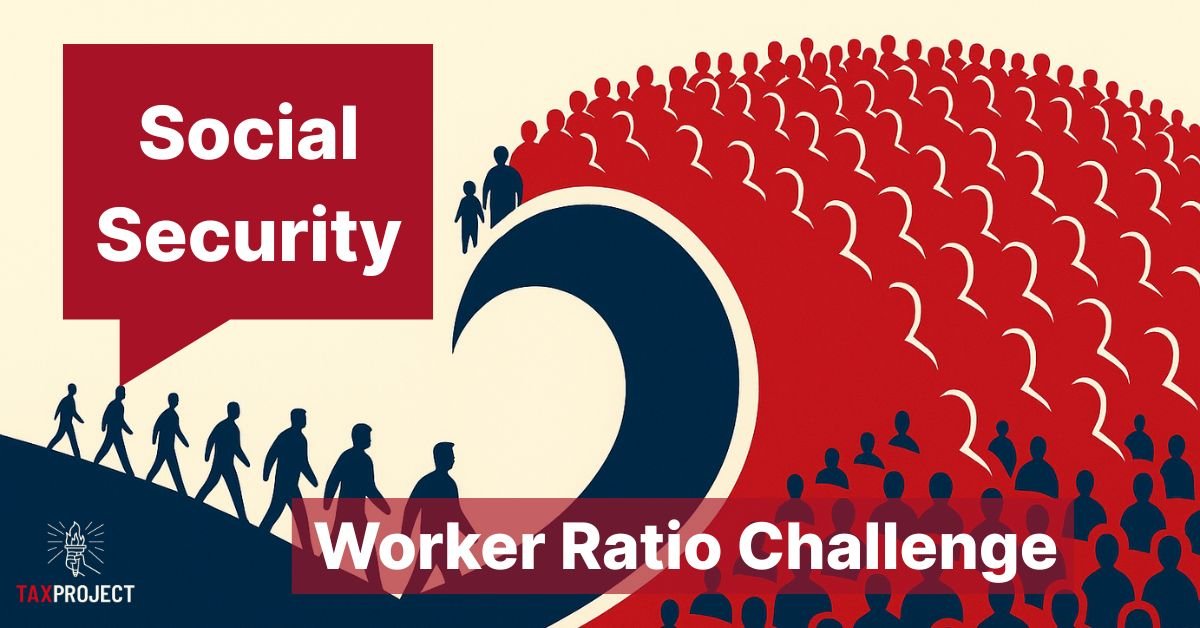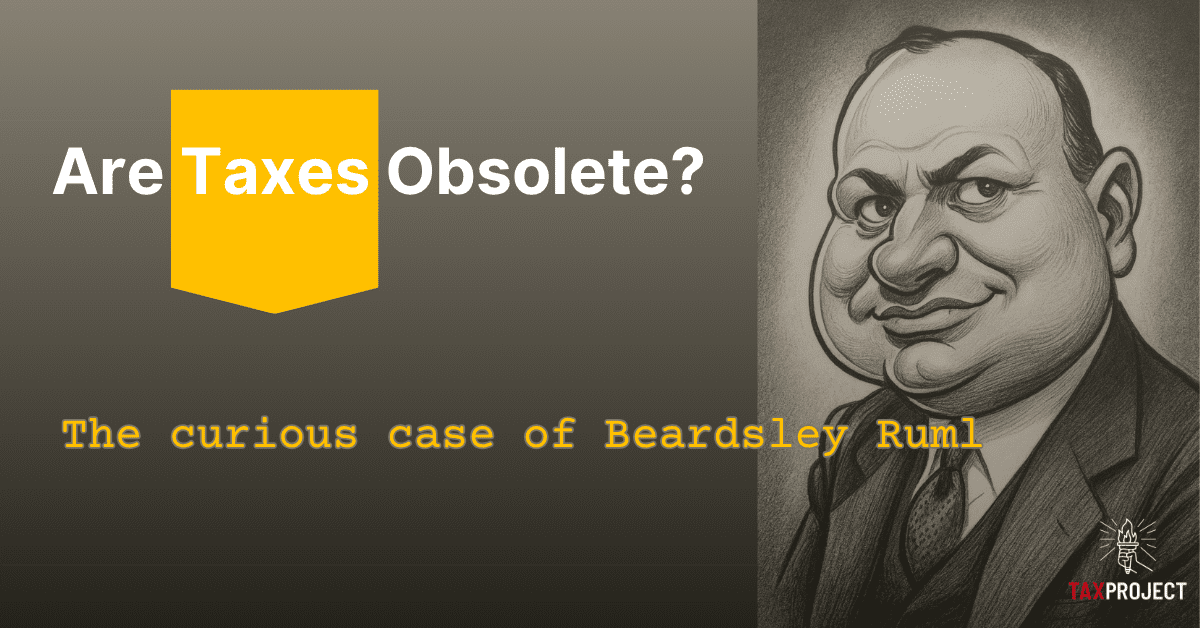How the Ultra-Wealthy Navigate the Tax Code
In the complex world of tax policy, few strategies spark as much public debate and scrutiny as “Buy, Borrow, Die.” This perfectly legal, yet often misunderstood and sometimes vilified, approach is a cornerstone of wealth preservation for America’s ultra-rich, allowing them to access significant liquidity without triggering the very capital gains taxes that much of the middle class routinely pays. For a younger generation facing unprecedented national debt and shifting economic landscapes, understanding this mechanism is crucial to grasping the nuances of fiscal policy and the distribution of wealth. It’s also important to denote that despite the rhetoric, patching this will not come anywhere near solving our annual trillion dollar budget deficits, but it can be part of the discussion on solutions.
Buy, Borrow, Die: The Strategy
Unlike most Americans, the ultra wealthy make significant portions of their income on assets, and not wages. Because of their substantial assets, they can employ strategies that aren’t available to most Americans. At its core, “Buy, Borrow, Die” is a three-pronged strategy designed to leverage appreciating assets, access cash, and ultimately pass wealth to heirs in the most tax-efficient manner possible by avoiding capital gain taxes.
The “Buy” Phase: Accumulation of Appreciating Assets
First step: accumulate assets with high growth potential. This typically involves investments like stocks, bonds, real estate, private equity, or even valuable collectibles. The key is that these assets are held for the long term, allowing their value to compound and appreciate significantly over decades. Unlike earned income (salaries, wages) which is taxed annually, the appreciation of these assets (unrealized capital gains) is generally not taxed until they are sold.
The “Borrow” Phase: Liquidity Without Taxation
Step Two: this is where the strategy diverges sharply from how most people access money. When the wealthy need cash for lifestyle expenses, new investments, or philanthropic endeavors, they don’t sell their appreciating assets. Selling would trigger capital gains tax on the accumulated profits. Instead, they borrow against the value of these assets.
The ultra-high-net-worth (UHNW) segment employs a variety of sophisticated borrowing strategies to access liquidity without triggering taxable events. These are individuals with more than $30 million in investable assets, representing less than 450,000 people world wide [21], so very few individuals can employ this strategy. While the underlying principle of “non-taxable loan proceeds” is consistent across these methods, the specifics of collateral, speed, and loan terms vary.
Buy, Borrow, Die Borrowing Mechanisms:
The wealthy leverage their assets to borrow with one of these mechanisms based on the type of asset, securities, real estate, businesses, art, etc. (See comparison Table 1 at end)
- Securities-Backed Lines of Credit (SBLOCs):
- Description: An SBLOC is a flexible, non-purpose line of credit offered by brokerage firms and banks, allowing individuals to borrow against the value of their non-retirement investment portfolios (stocks, bonds, mutual funds, ETFs). It is a revolving line of credit collateralized by liquid securities held in a brokerage account.
- Characteristics: SBLOCs are highly liquid and relatively quick to set up, often with Loan-to-Value (LTV) ratios that can go up to 70-95% for diversified, highly liquid portfolios. Interest rates are typically competitive, often tied to SOFR (Secured Overnight Financing Rate) plus a small spread. SOFR rates can be very low due to their low risk, even lower than the Prime rate given to banks top customers. SOFR-based rates are lower than what normal consumers can access for personal loans or credit cards.
- Mortgages and Home Equity Lines of Credit (HELOCs) on Appreciated Real Estate:
- Description: UHNW individuals frequently own multiple, high-value properties (primary residences, vacation homes, investment properties) that have appreciated significantly. Instead of selling a property and incurring capital gains, they can take out a new mortgage or a Home Equity Line of Credit (HELOC) against the substantial equity in the property.
- Characteristics: These loans are collateralized by real estate, involving appraisals and a more extensive underwriting process than SBLOCs. LTVs are generally lower than SBLOCs, typically around 70-80% of the home’s appraised value (minus any outstanding mortgage). Interest rates are often tied to the Prime Rate. For UHNW clients, these can be bespoke loans from private banks, with minimum loan sizes often in the millions of dollars [12]. Studies on UHNW real estate holdings consistently show them owning significant, high-value portfolios, making HELOCs and other property-backed loans a natural component of their liquidity strategies [10].
- Leveraged Recapitalizations on Private Business Interests:
- Description: For UHNW individuals whose wealth is primarily concentrated in a privately held business, a “leveraged recapitalization” allows them to extract significant liquidity without selling the entire business. The business itself takes on new debt (e.g., from banks, private credit funds, or through the issuance of leveraged loans), and a portion of these loan proceeds is then distributed to the owner as a tax-efficient dividend.
- Characteristics: This is a sophisticated transaction often involving corporate finance experts. The business takes on the debt, separating the owner’s personal liquidity needs from the business’s operational financing. The owner receives cash without a full sale, maintaining control and benefiting from future appreciation of the business. The volume of dividend recapitalizations funded by leveraged loans, for instance, reached significant levels in recent years, demonstrating the scale of this strategy for private equity-backed companies and, by extension, the UHNW individuals who own or invest in them [14].
- Loans Against Other Illiquid Assets (Art, Collectibles, etc.) & Private Bank Lines of Credit:
- Description: The ultra-wealthy often hold significant wealth in unique, illiquid assets such as extensive art collections, rare collectibles, or even intellectual property. Specialized lenders, often private banks or boutique financial firms, offer loans collateralized by these assets. Additionally, private banks may offer broad, bespoke lines of credit (PBLOCs) that are collateralized by a mix of assets, including securities, real estate, and other valuables, providing a single, flexible credit facility tailored to the client’s overall net worth [10, 11].
- Characteristics: These loans are highly customized. Valuation can be complex and expensive for these unique assets, and LTV ratios might be lower due to their illiquidity. While the market for art-backed loans is smaller than for other asset classes, it’s a key liquidity tool for UHNW individuals with high value collections [18]. The broader private credit market, which encompasses direct lending and financing against various assets, has grown significantly, nearing $2 trillion in assets under management (AUM) by 2024, demonstrating the immense capacity for non-traditional lending that can be utilized by the UHNW [15]. These types of loans are often a key component of holistic wealth management strategies for the UHNW, as highlighted by reports from global wealth managers [10, 11].
The critical tax advantage of all these borrowing methods is that loan proceeds are not considered taxable income by the IRS. You’re simply taking on debt that you’re obligated to repay. Therefore, by borrowing against their assets, the wealthy can access millions of dollars in cash without paying a single cent in capital gains tax, while their underlying assets continue to grow. This is a fundamental difference from an ordinary wage earner, who pays income tax on every dollar earned.
The “Die” Phase: The Great “Tax” Escape
Step Three: the final and most impactful leg of the “Buy, Borrow, Die” strategy comes into play at death. Under current U.S. tax law, when a person dies, their heirs receive a “stepped-up basis” on inherited assets. This means the cost basis of the assets (the original price paid by the deceased) is “stepped up” to the current fair market value on the date of the original owner’s death.
Consider an asset bought for $1 million that appreciated to $10 million. If the owner sold it during their lifetime, they would owe capital gains tax on the $9 million profit. However, if they hold it until death, their heirs inherit it with a new cost basis of $10 million. If the heirs then immediately sell it for $10 million, they incur virtually no capital gains tax, as their “profit” (sale price minus their new basis) is zero. The entire $9 million of appreciation during the deceased’s lifetime effectively escapes capital gains taxation forever. Any outstanding loans are typically repaid from the inherited assets, or the heirs can choose to assume the loan.
Scale and Revenue Impact
Accurately quantifying the exact usage of each borrowing mechanism to evaluate “Buy, Borrow, Die” strategies by UHNW individuals is challenging due to the confidential nature of private wealth management and the lack of granular public data. Market-wide figures for SBLOCs or HELOCs, while large, also include usage by individuals who are not necessarily engaged in tax-deferral strategies for multi-generational wealth transfer, many of which may not fall into the UHNW category so estimates are challenging.
However, a body of research points to the significant role of these borrowing tools in UHNW wealth management and highlights the immense scale of unrealized capital gains that ultimately might escape taxation.
- Securities-Backed Loans (SBLOCs): While the total outstanding SBLOC market reached approximately $138 billion as of Q1 2024 [2], research from the Bipartisan Policy Center (BPC) explicitly notes that these loans are “overwhelmingly held by high-net-worth individuals” [9]. This suggests a strong correlation between this market size and UHNW borrowing for liquidity against liquid portfolios, often specifically to avoid capital gains. FINRA’s investor alerts on SBLOCs also highlight their use for “postponing realization of capital gains” by allowing clients to “retain control over the timing of capital gains and the potential taxes associated with a securities sale” [20].
- Home Equity Lines of Credit (HELOCs) and Mortgages: The total HELOC debt nationwide was around $359.9 billion in 2024 [3], and the total home equity available for borrowing in the U.S. is estimated in the trillions [13]. For the UHNW, studies consistently show substantial allocations to real estate, often owning multiple properties. For example, a UBS Global Family Office Report often highlights real estate as a primary asset class for family offices, and these entities regularly employ bespoke lending solutions against these holdings for liquidity, rather than selling, which would incur capital gains [19].
- Leveraged Recaps and Private Credit: While not always solely for individual liquidity, the growth of the private credit market (nearing $2 trillion in AUM by 2024 [15]) is a strong indicator of the expanding capacity for private businesses to take on debt. For UHNW individuals who are founders or significant owners of private companies, leveraged recaps are a well-documented strategy to extract wealth without triggering a sale event. Deloitte’s analysis on leveraged distributions confirms their use for early monetization by investors and shareholders, often structured to manage tax implications [4].
- Loans Against Other Illiquid Assets & Private Bank Lines of Credit: The market for art-backed loans, while niche, serves the UHNW exclusively, with reports from major financial institutions catering to the UHNW acknowledging that lending against luxury assets is a tailored service [10, 11]. Furthermore, the Senate Finance Committee, in its report on Private Placement Life Insurance (PPLI), specifically highlighted how UHNW individuals use PPLI as a “tax-advantaged wrapper” for alternative investments (like hedge funds or private equity) and then “borrow from the policy at extremely favorable rates,” explicitly stating that PPLI is promoted as part of the “buy, borrow, die” strategy [18]. This demonstrates how complex financial products and less common asset classes are explicitly integrated into this overarching strategy.
The most substantial “missed” capital gains revenue is not from the immediate borrowing, but from the massive pool of unrealized capital gains held by the ultra-wealthy, which are ultimately shielded by the stepped-up basis at death.
- Total Unrealized Capital Gains: According to an analysis by Americans for Tax Fairness of Federal Reserve data, America’s billionaires and centi-millionaires (those with at least $100 million in wealth) collectively held at least $8.5 trillion of “unrealized capital gains” in 2022 [16]. This figure represents profits from unsold investments that may never be taxed under current law. The Institute on Taxation and Economic Policy (ITEP) similarly found that among families with more than $30 million in wealth, an estimated 43% of that wealth (or almost $17 trillion nationwide) takes the form of unrealized gains [17]. This immense pool of untaxed wealth is the real “elephant in the room” when discussing “missed” revenue.
Yale Budget Lab Study
A recent study from the Budget Lab at Yale, titled ““Buy-Borrow-Die”: Options for Reforming the Tax Treatment of Borrowing Against Appreciated Assets” (2025), provides a granular perspective on the direct impact of this strategy. They acknowledge that “buy-borrow-die is a well-documented tax planning strategy with several high-profile cases.” However, their research, building on work by Liscow and Fox (2025), in their paper “The Role of Unrealized Gains and Borrowing in the Taxation of the Rich,” found that:
“borrowing against assets appears to be a relatively minor source of cash income for wealthy Americans in the aggregate.”
Specifically, Liscow and Fox (2025) found that borrowing (of any kind) represents only 1% of the economic income of the top 0.1% by net worth. This contrasts sharply with the massive amounts of unrealized gains these individuals hold. This suggests that for the ultra-wealthy, the dominant strategy for tax avoidance is not primarily borrowing to consume, but simply not selling and letting gains accrue until death (“Buy, Save, Die”). As Liscow and Fox note, “the rich don’t avoid higher taxes primarily through borrowing; they just earn substantially more than they consume on an annual basis” [6].
The implication of these findings is that while reforms designed to include loan proceeds in taxable income (e.g., treating borrowing as a “deemed realization” event) would generate some revenue (Yale estimates $102 billion to $147 billion over ten years), their potential is “somewhat limited in their revenue potential compared with more fundamental reforms of capital income taxation” [5]. Still, the Yale Budget Lab concludes that “from a first-principles perspective, policy changes aimed at limiting buy-borrow-die are a natural place for reform in the current tax code.” These findings suggest that taxing the borrowing would have little impact on revenue, but the real wealth transfer is the “stepped up” basis of assets completely bypassing Capital Gains forever.
Potential Impacts and Fairness Discussions
Implementing a tax on borrowing against unrealized capital gains, or eliminating the stepped-up basis, would spark considerable debate:
Arguments for Change (Fairness & Efficiency):
- Tax Equity: Proponents argue that the current system allows the wealthy to pay a disproportionately low effective tax rate on their economic gains, especially when compared to wage earners who pay income tax on every dollar. This disparity fuels concerns about fairness and contributes to wealth inequality.
- Economic Efficiency: The “lock-in effect” (the incentive to hold appreciated assets indefinitely to avoid capital gains tax) discourages wealthy individuals from selling, even if it makes economic sense to reallocate capital. This can lead to inefficient allocation of capital in the economy.
- Revenue Generation (Long-Term): While taxing current borrowing might be limited, more comprehensive reforms like eliminating the stepped-up basis could unlock significant revenue. The Joint Committee on Taxation (JCT) estimates that the stepped-up basis will account for $58 billion in forgone revenues in 2024, rising to $68 billion by 2027 [7]. The Congressional Budget Office (CBO) has estimated that replacing stepped-up basis with a “tax at death” on unrealized gains could raise about $536 billion over 10 years [8]. The Bipartisan Policy Center (BPC) similarly estimates that repealing stepped-up basis would increase revenues by $130 billion over 10 years [9].
Arguments Against Change (Economic Impact/Practicality):
- Disincentive to Invest: Critics argue that taxing unrealized gains or making borrowing more expensive could discourage investment and capital formation, ultimately harming economic growth.
- Liquidity Issues: For assets like real estate or private businesses, selling to pay a tax could be impractical or forced, especially if the estate doesn’t have enough cash. This could lead to forced sales and disruption. This became very problematic in Silicon Valley when employee options were millions but cash poor employees were unable to sell to access the value.
- Valuation Challenges: Accurately valuing illiquid assets (like private businesses or art) at death for tax purposes could be complex and administratively burdensome.
- Personal Freedom and Individual Liberty: Opponents often frame proposals to tax unrealized gains or eliminate stepped-up basis as an infringement on personal freedom and individual liberty, arguing that individuals should have the right to hold onto their assets without continuous government claims on accumulated wealth until it is seized or transferred. They contend it moves towards a system where the government has a more pervasive interest in private property, potentially discouraging wealth creation and intergenerational transfers, and raising concerns of government over reach.
- Double Taxation: Some argue that taxing capital gains at death, in addition to potential estate taxes, constitutes unfair “double taxation” of the same wealth.
Conclusion
The “Buy, Borrow, Die” strategy, enabled by the non-taxable nature of loans and, crucially, the stepped-up basis at death, presents a stark contrast to how average citizens encounter the tax system. While the Yale study’s findings suggest that borrowing to consume represents a relatively small portion of the wealthy’s economic income, the overall scale of wealth involved in this strategy is immense. The combined figures for SBLOCs, the broader HELOC market, and the vast private credit landscape demonstrate how much capital can be accessed by leveraging assets without selling them.
More importantly, the core “loophole” for those who earn on their capital, rather than labor, is the stepped-up basis rule. With trillions of dollars in unrealized capital gains held by the ultra-wealthy, and tens to hundreds of billions in projected forgone federal revenue due to stepped-up basis, this is the most direct and impactful area for reform. Eliminating or significantly modifying this provision—perhaps by adopting a “carryover basis” where heirs inherit the original cost basis, or by instituting a “tax at death” on unrealized gains above a certain threshold—would be the most direct and impactful way to ensure that accumulated capital gains are eventually subject to taxation, regardless of how long assets are held. However, such reforms also face significant practical and economic objections. Critics argue that taxing unrealized gains or eliminating stepped-up basis could disproportionately harm families whose wealth is primarily tied up in illiquid assets, such as small businesses or generational farms, forcing them to sell productive assets simply to pay tax bills. It could also create severe liquidity challenges for employees of successful startups who are “paper rich” with highly appreciated stock but lack immediate cash. Furthermore, concerns exist that such changes could disincentivize long-term investment, curb capital formation, and lead to broader, yet unforeseen, negative impacts on economic growth and innovation across various sectors of the economy. Such a shift would aim to ensure that the growth of significant wealth is eventually recognized and taxed upon realization or transfer, moving towards a system where appreciated capital gains are more consistently part of the tax base.
Comparing Borrowing Mechanisms of the Wealthy
| Feature / Question | Securities-Backed Lines of Credit (SBLOCs) | Mortgages / Home Equity Lines of Credit (HELOCs) | Leveraged Recapitalizations (Private Businesses) | Loans Against Illiquid Assets / Private Bank Lines of Credit (PBLOCs) |
|---|---|---|---|---|
| Common Collateral | Liquid, non-retirement investment portfolios (stocks, bonds, ETFs) | Residential or commercial real estate (primary, vacation, investment properties) | The private business itself (business assets, cash flow) | Art, collectibles, other unique valuables; or a mix of various assets (for PBLOCs) |
| Typical LTV (Loan-to-Value) | High (70-95%) for highly liquid, diversified portfolios | Moderate (50-80% of appraised value) | Varies widely based on business’s cash flow, industry, and creditworthiness | Lower (often 30-60%) due to illiquidity and specialized valuation |
| Speed of Access | Very Fast (days to 1 week) | Slower (weeks to months, due to appraisals, title work) | Varies (months, complex transaction with due diligence) | Varies (weeks to months, depends on asset valuation and lender) |
| Interest Rate Basis | Variable (often SOFR + spread) | Variable (often Prime Rate + margin) or Fixed | Variable (often SOFR or Prime + significant spread) | Variable (often SOFR or Prime + spread) |
| Credit Check Diligence? | Often less rigorous, focus on collateral value | Yes, standard mortgage underwriting (credit score, income) | Yes, extensive business financial review, covenants | Yes, comprehensive UHNW client financial profile |
| Purpose Restrictions? | Generally “non-purpose,” but cannot be used to buy more securities | Generally “non-purpose,” but interest deductibility may require specific use (e.g., home improvement) | Funds are distributed to owner; business debt, but provides owner liquidity | Generally non-purpose, highly flexible |
| Key Tax Benefit | Access cash without selling appreciated securities and triggering capital gains tax immediately. | Access equity without selling appreciated real estate and triggering capital gains tax immediately. | Extract value from private business without triggering a taxable sale event for the owner. | Access liquidity from illiquid assets without selling and triggering capital gains tax immediately. |
| Risks to Borrower | Margin calls if collateral value drops, interest rate fluctuations | Interest rate fluctuations (for variable), property value decline, default risk | Business debt burden, impact on business operations, default risk | Valuation risk of collateral, interest rate fluctuations, default risk |
Citations
[1] Investopedia. “Secured Overnight Financing Rate (SOFR) Definition and History.” Accessed May 26, 2025. https://www.investopedia.com/terms/s/sofr-secured-overnight-financing-rate.asp
[2] Federal Reserve Board. “Estimating Securities-Based Loans Outstanding.” FEDS Notes, August 2, 2024. https://www.federalreserve.gov/econres/notes/feds-notes/estimating-securities-based-loans-outstanding-20240802.html
[3] Experian. “HELOC Balances Surpass $45,000 in 2024.” March 27, 2025. https://www.bankrate.com/home-equity/how-big-can-home-equity-loan-be/
[4] Deloitte. “M&A Tax Talk: Leveraged distributions.” January 4, 2024. https://www2.deloitte.com/content/dam/Deloitte/us/Documents/Tax/us-ma-tax-talk-leveraged-distributors.pdf
[5] Yale Budget Lab. ““Buy-Borrow-Die”: Options for Reforming the Tax Treatment of Borrowing Against Appreciated Assets.” March 2025. https://budgetlab.yale.edu/research/buy-borrow-die-options-reforming-tax-treatment-borrowing-against-appreciated-assets
[6] Fox, Edward and Liscow, Zachary. “The Role of Unrealized Gains and Borrowing in the Taxation of the Rich.” University of Michigan Law School Scholarship Repository. January 25, 2025. https://economics.yale.edu/sites/default/files/publication-documents/2025-01/UnrealizedGainsandTaxesKeyFactSheet.pdf
[7] Peter G. Peterson Foundation. “What Is Stepped-Up Basis on Capital Gains and How Does It Affect the Federal Budget?” Accessed May 26, 2025. (Citing JCT estimates). https://www.pgpf.org/article/what-is-the-stepped-up-basis-and-how-does-it-affect-the-federal-budget/
[8] Congressional Budget Office (CBO). “Change the Taxation of Assets Transferred at Death.” Options for Reducing the Deficit. February 2025. https://www.cbo.gov/budget-options/60943
[9] Bipartisan Policy Center. “Paying the 2025 Tax Bill: Step Up in Basis and Securities-Backed Lines of Credit.” December 12, 2024. https://bipartisanpolicy.org/explainer/whats-in-the-2025-house-republican-tax-bill/
[10] HSBC Global Private Banking. “The unorganised state of Ultra High Net Worth wealth.” Accessed May 26, 2025. https://www.privatebanking.hsbc.com/entrepreneurs/global-entrepreneurial-wealth-report/the-unorganised-state-of-ultra-high-net-worth-wealth/
[11] UBS Global. “Family Office and UHNW.” Accessed May 26, 2025. https://www.ubs.com/global/en/wealthmanagement/family-office-uhnw.html
[12] Deutsche Bank Wealth Management. “Lending Solutions.” Accessed May 26, 2025. https://www.deutschewealth.com/dam/deutschewealth/us-events/april-2025/lending-solutions-brochure-eua.pdf
[13] TechSci Research. “Home Equity Lending Market By Size, Share and Forecast 2030F.” Accessed May 26, 2025. (Notes $29.7 trillion in home equity in the U.S. in 2024). https://www.skyquestt.com/report/home-equity-lending-market
[14] Stout. “Surge in Alternative Liquidity: | Stout.” December 17, 2024. (Notes that dividend recap volumes exceeded 2021 record levels in 2024, with over 80% funded by leveraged loans). https://www.stout.com/en/insights/article/surge-in-alternative-liquidity
[15] Hubbis. “Private Credit: The New Frontier in Wealth Management for 2025.” Accessed May 26, 2025. https://www.hubbis.com/article/private-credit-the-new-frontier-in-wealth-management-for-2025
[16] Americans for Tax Fairness. “The Ultra-Wealthy’s $8.5 Trillion of Untaxed Income.” January 3, 2024. https://americansfortaxfairness.org/ultra-wealthys-8-5-trillion-untaxed-income/
[17] ITEP.org. “The Geographic Distribution of Extreme Wealth in the U.S.” October 13, 2022. https://itep.org/extreme-wealth-by-state-2022/
[18] Senate Finance Committee. “Private Placement Life Insurance: A Tax Shelter for the Ultra-Wealthy Masquerading as Insurance.” February 21, 2024. https://www.finance.senate.gov/imo/media/doc/ppli_report_final.pdf
[19] UBS Global Family Office Report 2024. (While specific link is not publicly available, these annual reports consistently detail asset allocation and wealth management strategies of family offices, including real estate and various lending solutions). https://fincotrust.com/2025/03/12/insights-from-the-ubs-global-family-office-report-2024/
[20] FINRA. “Securities-Backed Lines of Credit Explained.” January 3, 2024. https://www.finra.org/investors/insights/securities-backed-lines-credit
[21] Altrata: World Ultra Wealth Report https://altrata.com/reports/world-ultra-wealth-report-2024











